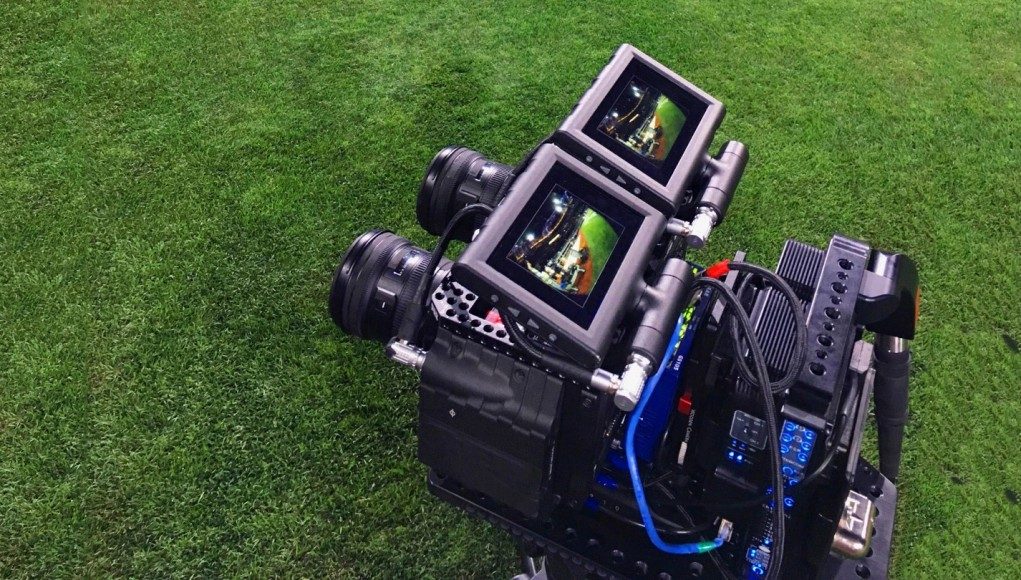Today, live event broadcasting specialists NextVR announced three technology advancements to their platform coming this year: six degrees of freedom-enabled content, higher resolution output, and augmented reality support. A sneak peek of the technologies is being shown to media at CES 2018.
Positional tracking is the dream for immersive video content, but it is a complex hardware and software challenge. If done correctly, the improvement over common 3DoF content is significant, both in terms of comfort and presence. NextVR claim that their 6DoF solution will make obstructed views “a thing of the past” and that users will be able to naturally shift their vantage point to look around a referee or spectator as they would in reality.
The company haven’t provided details about their process, but 6DoF support has been on their road map for some time, having spoken about the use of light field technology for this purpose in 2015. High quality volumetric video has been demonstrated with enormous camera rigs from companies such as HypeVR and Lytro, but NextVR’s solution is likely to be more compact for the practicalities of event capture and broadcast; on-demand 6DoF content in 2018 is expected be followed by live 6DoF broadcasting.
“VR is the most demanding visual medium ever created and we’re just beginning to deliver on its potential to convincingly create experiences that mimic reality,” says David Cole, NextVR Co-Founder and CEO. “The ability to move naturally inside the experience and the increased ability to see detail add a critical level of presence and realism.”
Higher fidelity output is coming to NextVR early this year, as a result of platform optimisations. The company says it has “exploited and enhanced the detail capture capability of its proprietary VR cameras and encoder infrastructure,” which enables “much higher resolution and higher detailed playout on compatible VR headsets.”
In addition, NextVR plans to “broadly support” AR devices in mid-2018. Exactly how NextVR’s popular live event content will be presented in augmented reality is unclear, but the company says “this cohesive blend of real and transmitted reality allows for real life social engagement while still delivering an unmatched entertainment experience.”
Launched in 2009, NextVR has many years of experience in live broadcast, transitioning from stereoscopic 3D content delivery as Next3D to a VR-focused platform. In recent years, the company has concentrated its efforts on mobile VR platforms such as Gear VR and Daydream, and only recently introduced support for 6DoF-capable hardware in the form of Windows Mixed Reality and PlayStation VR apps in October 2017. While the Oculus Rift and HTC Vive surprisingly still lack support, the company has further plans to support new hardware this year, “including affordable and powerful all-in-one mobile headsets.”
We have feet on the ground at CES, so check back for all things virtual and augmented.







